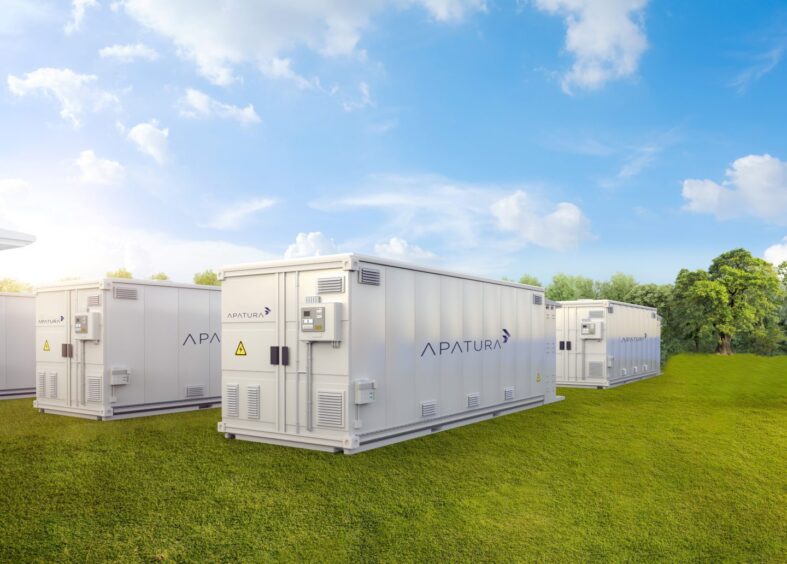
The UK government has today launched a new scheme designed to leverage investment in long-term energy storage capacity, which will operate as a ‘cap-and-floor’ mechanism.
The Department for Energy Security and Net Zero (DESNZ) said the new investment scheme could spur the first major long-duration power storage facilities the country has seen in almost four decades.
It argues that locking in energy storage capacity will bolster energy security by providing backup energy capacity that will support the grid as renewable energy adoption continues to grow, while minimising the risk of energy blackouts.
The new energy storage scheme will include a cap on the revenues of project owners, forcing them to share some or all profits above a set threshold, while a minimum floor price will guarantee certain revenues for operators.
It is hoped that the floor price will provide comfort to investors that operators can meet debt payments if revenues are lower than forecasts.
Battery storage milestone
The ‘cap-and-floor’ mechanism was announced shortly after the UK’s largest grid-connected battery storage project was switched on in the North Yorkshire town of Drax earlier on Monday.
The scheme will be open to a range of technologies including pumped storage hydropower, which stores electricity by pumping water in a reservoir that is later released to create hydroelectric power, and more nascent technologies such as liquid air energy storage, compressed air energy storage and flow batteries.
The battery energy storage system at Lakeside Energy Park was developed by TagEnergy, hand in hand with Tesla, which provided lithium-ion batteries for the up to 200 megawatt-hour capacity energy storage system, with project partners Habitat Energy and RES.
DESNZ said in the statement that homegrown energy and storage projects will ‘strengthen the UK’s energy independence’ and protect consumers from volatile gas markets.
Until now energy storage has often been viewed as having high upfront costs despite low operational expenses, which has been a barrier to investment.
The UK’s National Electricity System Operator estimates that a total of 11.5 GW to 15.3 GW of so-called ‘long duration’ energy storage will be required by 2050 to achieve net zero.
According to government analysis, deploying 20 GW of long-term energy capacity could save £24 billion in the electricity system from next year to 20250 and reduce bills while reducing reliance on natural gas.
Support mechanism
The government held a consultation earlier this year proposing a cap-and-floor scheme designed to leverage investment in energy storage, which would provide a guaranteed minimum income for developers while capping revenues.
The first round of the scheme, which will be regulated and delivered by Ofgem, is expected to be open to applicants from next year, according to the statement.
The announcement comes days before the UK is due to host the International Investment Summit on 14 October.
It builds on confirmation last week of funding for two carbon capture sites in Merseyside and Teesside, which are expected to attract £8 billion of private investment, and the launch of Great British ‘GB’ Energy in Aberdeen.
UK Energy Minister Michael Shanks said: ‘We’re reversing a legacy that has seen no new long-duration storage built for 40 years – and taking steps to unleash private investment in both established and new technologies.’
The new scheme has so far been welcomed by industry. Roderick MacLeod, Energy Director at Glen Earrach Energy, an energy company formed by owners of the Balmac estate that is planning a 2 GW pumped storage hydro project on Loch Ness, said: ‘The UK government’s proposed income floor is the right move in the right direction…’
‘We are eager to work in collaboration with the UK government to develop a cap-and-floor mechanism that optimises grid benefits, consumer value and environmental and community benefits,’ he added.
SSE Renewables welcomed the announcement, with director of hydro Robert Bryce stating: “Today’s announcement on a cap and floor investment framework is a massive step forward in delivering more of the flexible homegrown energy the UK needs in our transition to net zero.
“SSE’s Coire Glas has the potential to be at the forefront of delivering much needed large-scale long duration electricity storage – providing vital back up to an increasingly renewables-led system and bolstering energy security.
“The flagship project in the Scottish Highlands can shift the dial on pumped hydro storage – harnessing the power of wind and water to become Britain’s biggest natural battery, storing excess renewable energy at times of low demand and supporting a future clean electricity system with instant power.
“We now need to harness momentum from this decision and accelerate at pace with a clear timetable to implement the new framework so clean energy investors like SSE can take positive decisions to unlock investment in these nation building projects. SSE will continue to work closely with Government and Ofgem as the regulator and delivery body to support a speedy implementation so we can unlock investment in Coire Glas and other large scale storage projects to secure the benefits to UK consumers and society that they bring.”
Recommended for you

